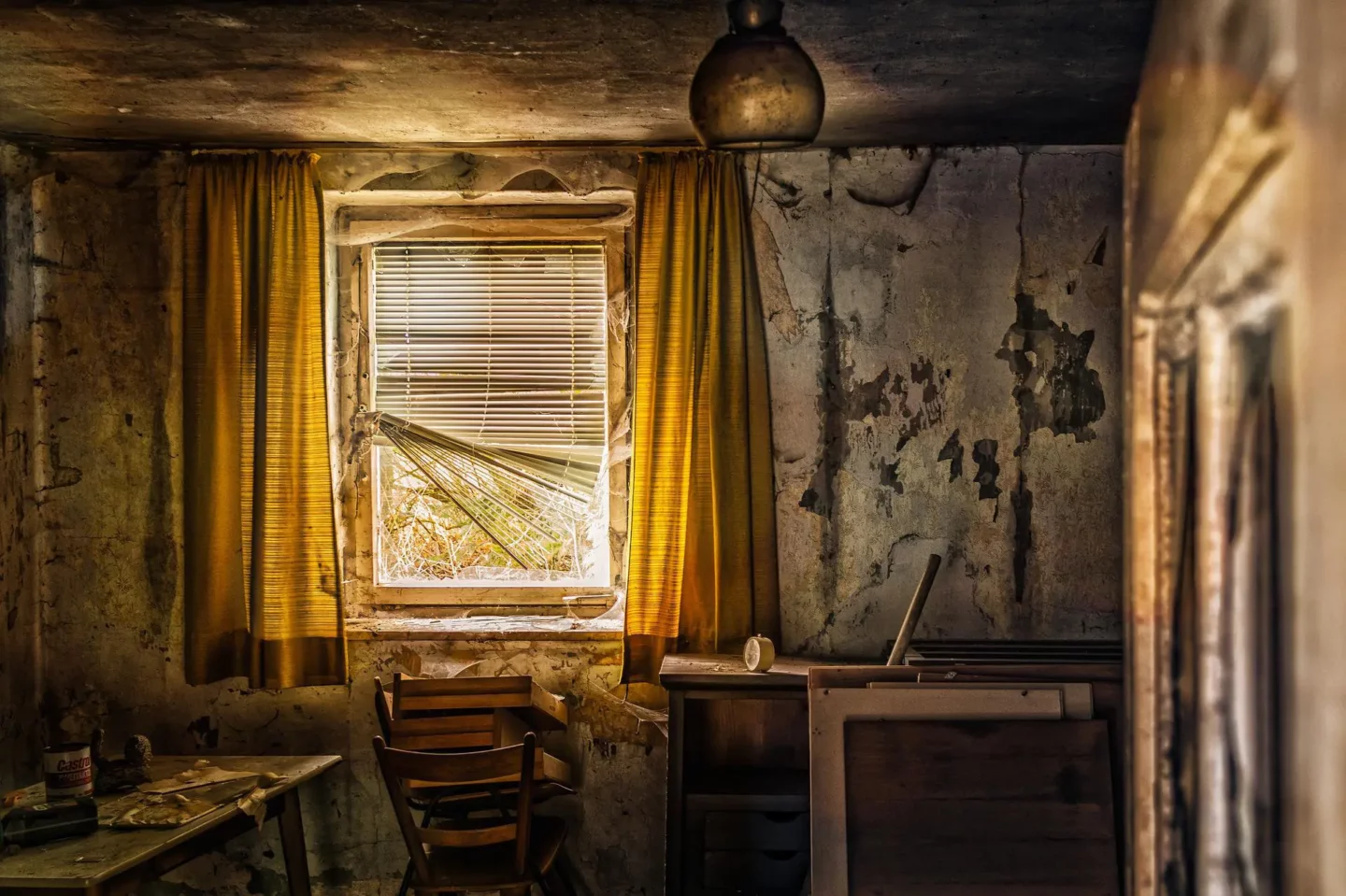I still wonder if it was already there when we moved into the new house. Hiding in the roofspace listening for movement below. I finally had my own room. My mum bought a bunk bed she could ill afford from a fancy furniture shop on Mill Street. She wanted it in case my brother chose to visit. I slept on the top bunk, though it was smaller. The bottom bunk remained unused for most of the first year.
The previous tenants had wrecked the place, so the council made us wait a month while they repaired it. By the time we moved in at the start of August the house looked brand new. Positioned at the end of a terrace row, my room had two walls exposed to the North Antrim wind. I used to lie in bed and listen as the wind blew an eerie tune, like a children’s choir in a horror film.
The plaster on the ceiling had been set in decorative swirl patterns I looked up at while drifting off to sleep. It wasn’t until the Halloween holidays that the lack of a heater in the room became a problem. In the mornings I woke early with a numb nose. My fingers and toes were numb too. By mid-November I could see my breath. I learned to blow smoke rings before I was a smoker. My mum gave me an extra blanket, and gloves, socks and a hat to wear in bed – not some dinky Ebenezer Scrooge effort, a woolly hat with a bobble on top. She complained to the council, who told her the hall radiator could heat the entire house, and we were to leave our doors open while we slept. We had no option but to try it, but in the morning the cold still woke me, and I could still blow smoke rings.
The damp started as a tiny dark spot on the outer edge of one of the plaster swirls. Lying with my head on the pillow the spot lined up with my eyes. By the following week there was a little solar system: eight black dots, each clung to a point on the swirl with a larger dot at the centre they seemed to be orbiting. It looked like a face, leading with the nose. My mum washed them off with vinegar, and for a week the swirl stayed clear. Then new spots grew. Again, mum washed them off, but by then spots had appeared on other parts of the ceiling.
When mum complained again to the council, they sent an inspector. He told us the damp was caused by heat. It had caused the moisture in the air to condense onto the walls. He recommended keeping a window open, in December, and turning the heating down, although the room didn’t even have a heater. For Christmas I got an oil filled radiator. It allowed me to sleep without a hat, but it didn’t stop the black dots, which had begun swelling into each other.
I’d learned in school that damp was a fungus; it was alive. It began to gather in tufts of blue fur, coating the clothes in my wardrobe. At first, I thought the damp was millions of tiny spores taking over the ceiling; their hive mind telling them which formation to take. But drifting off at night I wondered, maybe the damp was one life form, an animal larger than me. Not just living on the ceiling or in the wardrobe but in the air too. By blowing all those smoke rings I’d inhaled those little spores, sucked them down into my lungs, and breathed them back out again, heated and strong, ready to cling to any speck of ceiling as yet uncovered. I developed a wheeze; it seemed some spores had stayed with me, nestled in my tiny air sacs.
The surface of the damp developed a furry appearance. In my dreams it would start off in the background, as if it had been stalking me, before it formed into a wild dog or a bear and leapt off the ceiling, too late for me to escape. I would wake with a start, staring into its silent hide, and wonder if this was only the start of it, that a massive beast lived in the roof space and was sifting through the ceiling. A solid being that could move through walls. I envied its thick fur, which enabled it to stand the cold while it waited, waiting, while I slept or tried to sleep.
It was April when the ceiling collapsed, in the middle of the night while I slept. Chunks of rotten plaster lay on the top bunk, telling me that whatever else was living in my room wasn’t here to share it peacefully. I’d moved to the bottom bunk only a week before, hoping, without the dark mass directly above me, my nightmares might stop.
I moved into the living room while my ceiling was rebuilt. This time they made the surface smooth, no bumps for new damp to cling to. The council installed a small electric heater in my bedroom for the following winter. Damp still came back in spots, but never to the same degree. It had been tamed, but not completely beaten. My wheeze stayed with me, being most prominent when I laughed. Every snigger remains laced with a reminder.
The Shared Bedroom was first published in Number Eleven.
